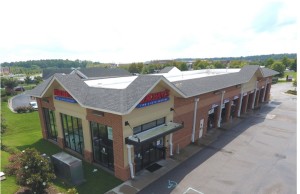New Report First to Study Affordable Housing and Smart Growth in the Greater Richmond Region
Richmond, September 25, 2007 – Growth has brought many benefits to the Richmond region, but it also has brought sprawling development, escalating traffic, and a shortage of affordable housing. As the region continues to grow, the stakes are rising. The region is projected to need over 125,000 new housing units between 2000 and 2030 to meet population growth. And at the current rate of land development – four times faster than population growth – more land will be developed in the region in the next 20 years than in the previous 400.
A report released today by the Southern Environmental Law Center (SELC) and the Virginia Local Initiatives Support Corporation (LISC) explores the enormous economic, health, environmental, and social impacts of the housing, land development, and transportation trends transforming the Greater Richmond Area. It shows how these challenges are linked and how they can be addressed more quickly and effectively. Written by Trip Pollard, Director of SELC’s Land and Community Program, and Frances Stanley, Research Analyst for Virginia LISC, Connections and Choices: Affordable Housing and Smarter Growth in the Greater Richmond Area compiles and analyzes data from multiple sources, and presents a fresh look at growth trends, impacts, and alternatives in the region’s six localities.
“We need to recognize how the connection between land use, transportation, and housing is central to many of the most pressing challenges facing the region,” Pollard said. For example, skyrocketing housing costs have prevented many essential employees such as teachers, police, and firefighters from living in the communities where they work.
“This trend not only hurts our neighborhoods, it burdens those employees who have to spend time commuting, and harms our environment by worsening tailpipe pollution,” he said.
“Among other things, the region’s lack of transportation choices can be especially burdensome to individuals without a car or no longer able to drive, who all too often find it difficult to get or retain jobs – particularly in suburban locations not served by transit,” Stanley said. “This report highlights some of the attractive alternatives that would promote more sustainable long-term growth while strengthening our communities.”
“An old latin proverb suggests: “A disease known is half-cured.” Connections and Choices provides fresh insights into some of the most pressing challenges facing the Greater Richmond Area, along with a well conceived prescription by which they might be addressed.,” according to Dr. Gary Johnson, an urban studies expert and Virginia Commonwealth University professor emeritus.



